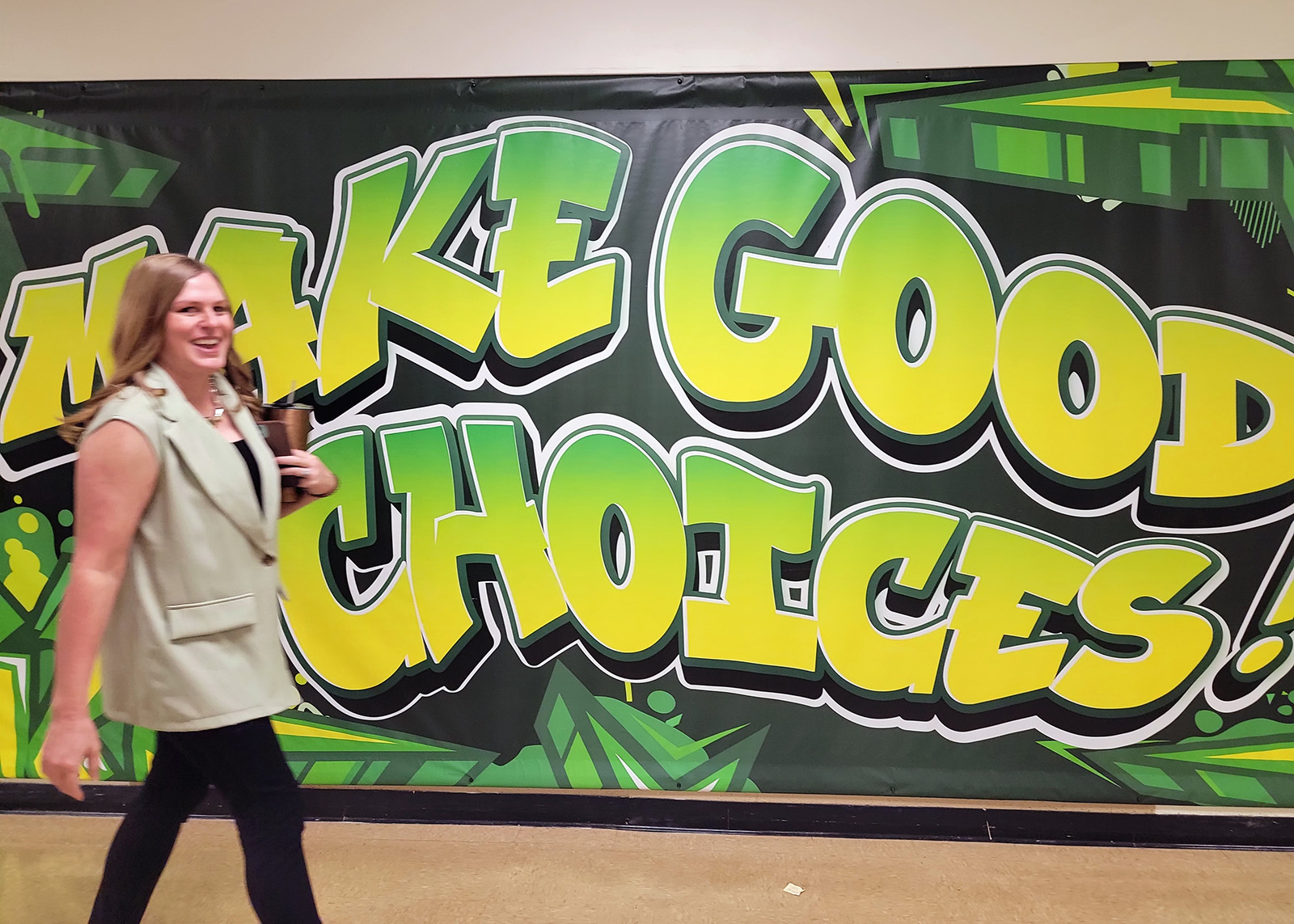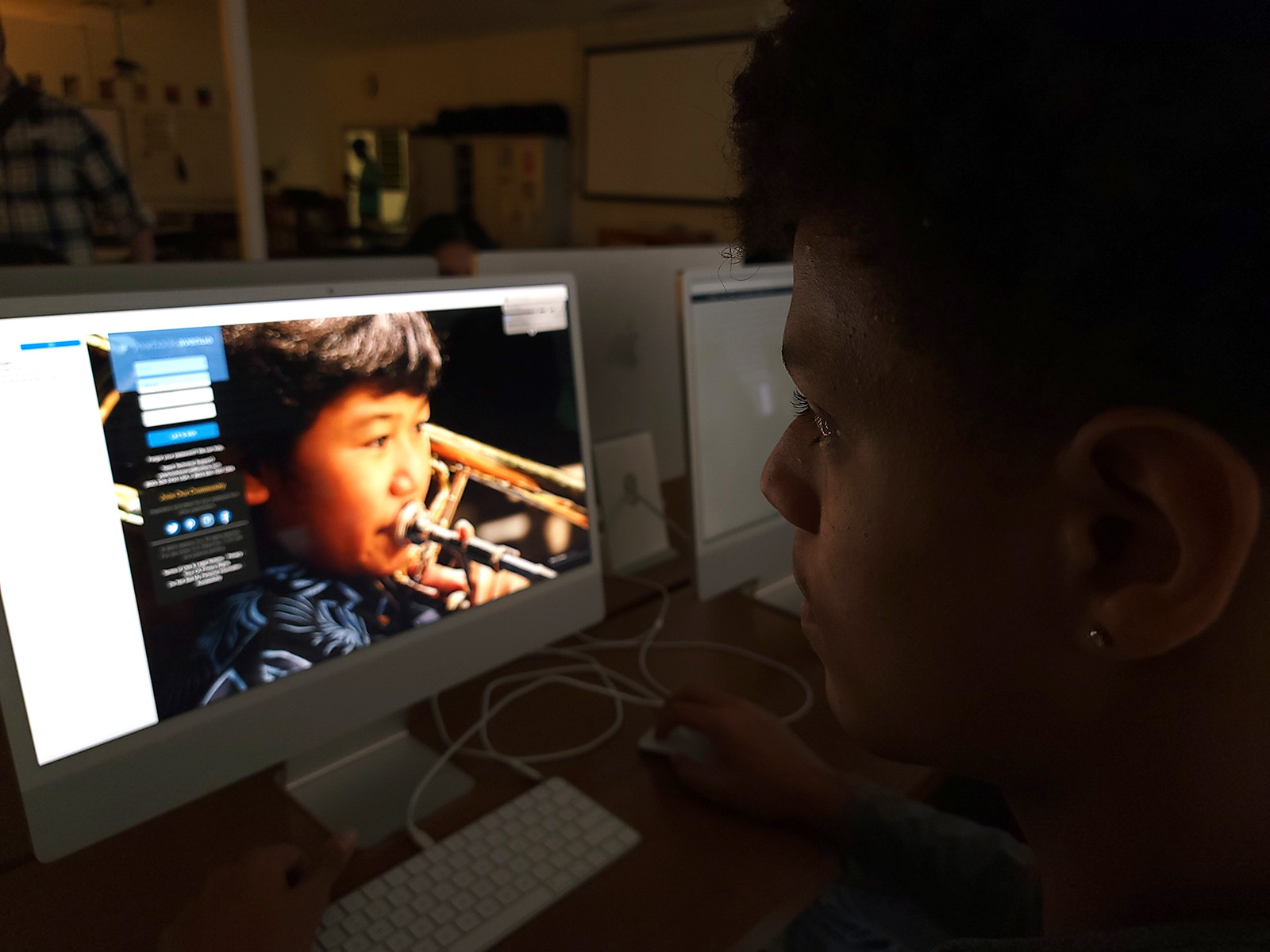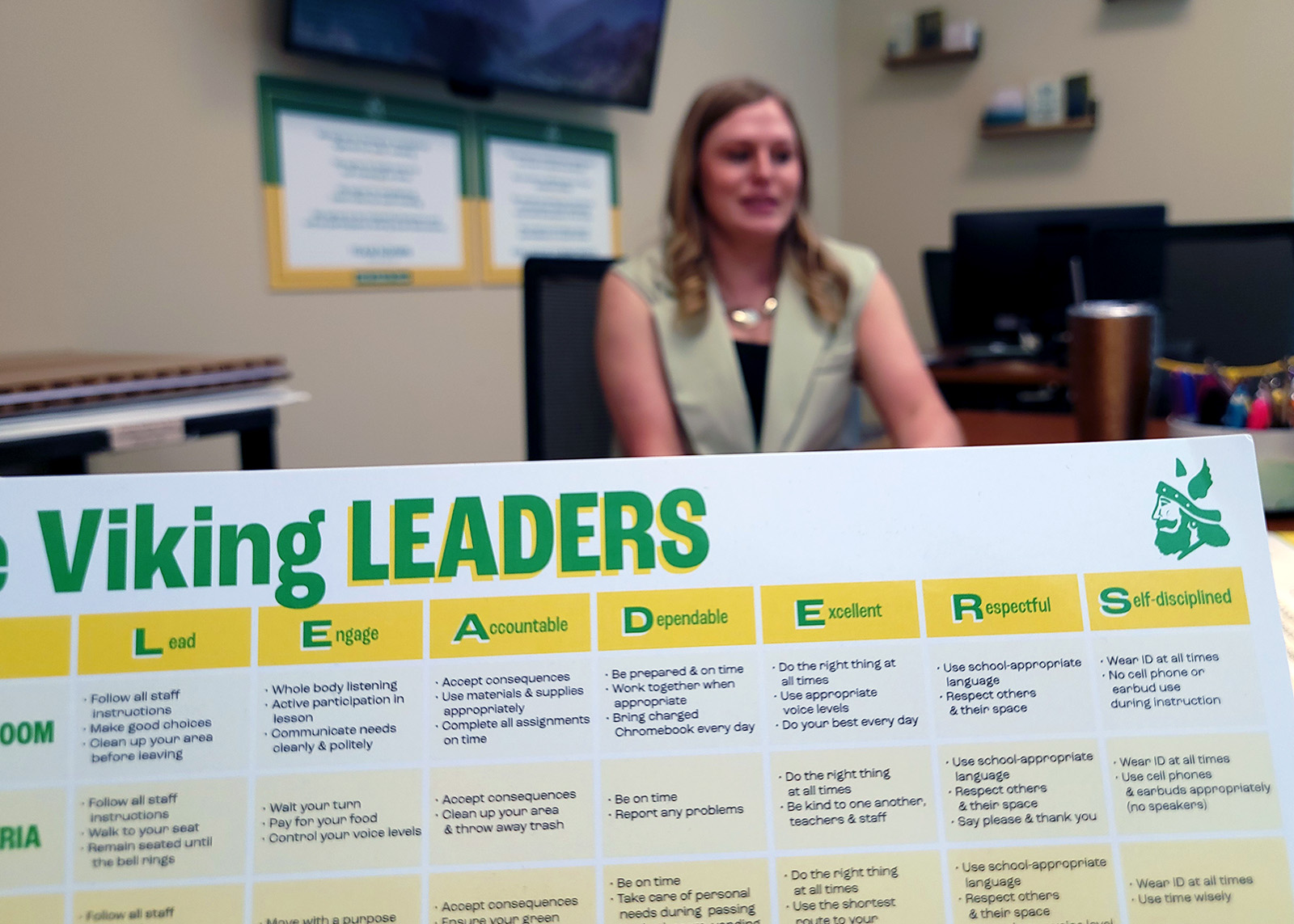School started much differently this year for Principal Megan Brown and the staff at Parkview High School.
It began with class meetings in the school’s auditorium, where the faculty laid out behavior expectations with each of the school’s 1,340 students.
Instead of diving right into syllabi and introductory lessons, they spent some time reviewing standards of good behavior. Teachers talked about the student handbook and pointed out behavior reminders on posters.
Students walked through hallways lined with colorful signs in the school’s green and gold colors, with messages such as, “Be positive,” “Make good choices,” and “Be passionate.” Others highlight qualities that students can emphasize in order to be Viking Leaders.

It’s a different approach, but not an unfamiliar one, to Brown. Before joining the staff at Parkview a few years ago, she taught at elementary schools in northwest Arkansas. She was part of efforts to outline behavior expectations with younger students.
In previous years, the process also happened in Springfield’s elementary schools. For the first time this year, Parkview — as well as the district’s other middle and high schools — extended the effort to talk about conduct.
And it makes a lot of sense, Brown said.
“For me, being in elementary and transitioning to high school, I saw very quickly that these are just kids in big bodies,” Brown said. “Ultimately, they want the same kinds of structure and consistency, and someone to communicate with them regularly.”

New behavior plan
As part of its strategic plan implemented last year, Springfield Public Schools now uses a plan to ensure good behavior and discipline through a system of behavioral expectations and positive reinforcement.
The behavior system is one of six provisions in the plan’s first objective, “Success-ready Students.” That objective is the largest of the plan’s four objectives, and covers progress toward educating students and supporting teachers.
Educators in Springfield have been tasked with a goal of preventing behavior problems from building and interfering with other students’ lives. Teachers meet this goal by setting expectations and rewarding student successes.
Nicole Holt, Springfield Public Schools deputy superintendent of academics, said parents have been invited into the loop more in 2023 compared to previous years. Springfield Public Schools printed a handbook for every family of students, which had to sign for its receipt.
“At all levels, parents will see more consistent frameworks,” Holt said. “Schools are communicating expected behaviors with families. We may have had these out in front during previous years, but we didn’t send them home. This year, we are teaching it.”

Officially, it’s known in the plan as “Objective 1.3: Maintain a positive classroom environment conducive to teaching and learning.” It calls for four strategies:
- Reviewing existing programs for behavior support.
- Monitoring implementation of consistent behavior programming.
- Provide continuous training and support for teachers and other leaders in order to be consistent across the district.
- Explore and expand opportunities for students in need of alternative settings.
Arranged into what the SPS faculty members call a matrix, the plan identifies which behaviors are encouraged and reinforced with rewards, and which behaviors damage the learning environment and call for remediation.
Those behaviors are then tracked and shared, in order to build a treasure trove of information, from general trends about behaviors and punishments to specific data points about how well a type of remediation works.
Holt said the matrix does not serve as a flowchart, or something to take decisions about punishments away from administrators. Instead, it gives teachers and principals ways to prevent most bad behaviors in classrooms from growing into bigger problems.
“Teachers have the hardest job in the system, and we should do anything we can do to make the system more efficient,” Holt said. “It’s about clarity and consistency. Teachers become frustrated when things are not clear, when there are high levels of ambiguity. When we clear the plate with consistent action steps, it’s easy to stick with it.”

Framework uses well-researched model
Springfield Public Schools' behavior plan relies on a model known as Positive Behavioral Interventions and Supports, a model that emphasizes focusing on positives instead of negatives. Instead of telling a student to avoid a certain behavior, they are redirected toward an active alternative.
The emphasis on a positive encourages clarity in communication. For example: Imagine a lifeguard at a public swimming pool who spots a child running on the slick deck. Instead of saying, “Don’t run,” this strategy calls for the lifeguard to say, “Walk.”
At a swimming pool, the model keeps swimmers safe. In a school, it goes much further. Elizabeth Avery, vice president of school services for Burrell Behavioral Health, said the PBIS framework helps keep a student in a good mindset for learning.
“It looks at how social and emotional competence supports academic success,” Avery said. “These are inter-related. There is a lot of research that shows students struggle academically if there are mental health issues.”
Avery said the model is used in schools across the United States. In development since the ‘60s, the model has been well-researched and found to be particularly effective for creating a safe climate in schools, she said.
Springfield Public Schools partnered with Burrell in 2019 to launch its framework in elementary schools. Burrell has helped with training educators about how to use the system.

From academics to actual life
Brown said her teachers and staff members have done a lot of work to get the system up and running this year.
It started with preparing materials for classrooms. One example is a poster that lists behavior expectations, where students are encouraged to “lead, engage, accountable, dependable, excellent, respectful and self-disciplined” — a list with an acronym of “LEADERS.”
Other posters give examples of exactly how students can demonstrate those qualities in the cafeteria, halls, gym, library and other locations around Parkview.
Teachers, who have always been trained to be eagle-eyed, are now asked to congratulate students they see demonstrating those encouraged behaviors — effectively adding “Thank yous” to their “Watch its.” Students get rewards, such as coupons that can be cashed in for prizes and treats in the school’s Leader Lounge.
As for those “watch its” and other commands to stop a behavior, teachers now give a redirection toward an encouraged activity.
Though she said that high school students are “kids in big bodies,” Brown also said she knows that those big bodies are capable of inflicting damage and violence. Teachers at Parkview, as well as the Springfield’s other public high schools, still have the ability to call for help from the district’s police officers for instances where behavior breaks laws.
The PBIS system works in three tiers, where the entire school community included in tier 1. The second and third tiers are used for much smaller groups of students with continued behavior situations.

Working so far
Brown said Parkview teachers embraced the new approach to behavior. Though they put in extra work to get this system rolling, it put everyone on the same page of the handbook, and reduced the number of conflicts between teachers’ preferences.
“Previous to this year, every classroom had their own set of rules,” Brown said. “A student might be able to use earbuds in one class, but not in the next one. We saw a lot of students confused. Now we are all on the same page and have a common language whether we are talking with students, parents or each other.”
That “same page” is being read by everyone in the district, as well. While Holt said principals still have the ability to discipline students as they see fit, the system will help reduce enforcement inconsistencies between Springfield’s five public high schools.
Holt said that this school year will be an important year for one main reason: Collecting that first year’s worth of data. Holt said the district is committed to using the PBIS system for the long haul, and expects to see a jump in numbers over the first year.
“We would like to see data moving in a positive direction over three to five years,” Holt said. “What we did in year one can have lasting systemic changes, with each year afterward looking better.”
While the big picture is far from developed, Brown likes the snapshot from the first two weeks of school. She and other teachers have seen students buying in in several ways, from picking up trash to apologizing to teachers for transgressions. In the first two weeks of the school year, Brown said, there were no fights at Parkview High School.
“It looks a little different, and I would love to say it is this,” Brown said. “Ultimately, the students are more aware of others. We have preached to students that we are all a team, and I think that has rubbed off on students. We’ll have to compare as the year goes on, but right now, but right now, setting expectations have helped eliminate more serious problems.”

